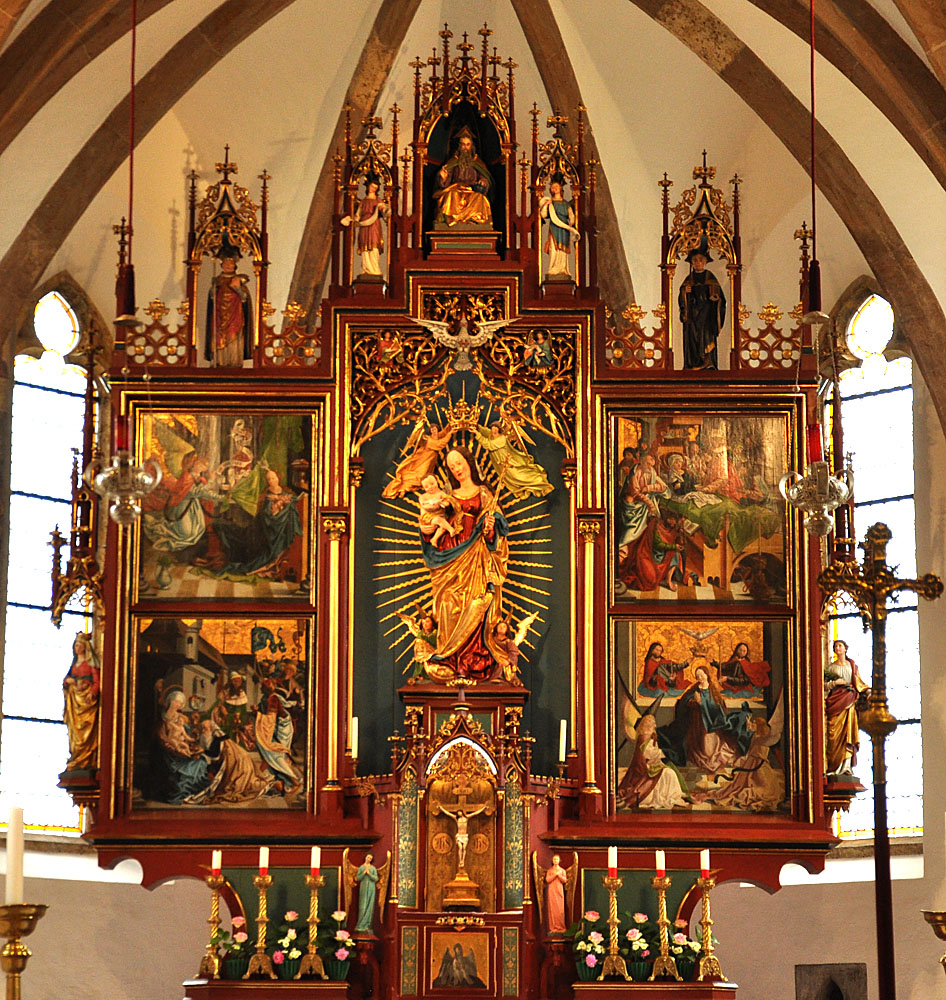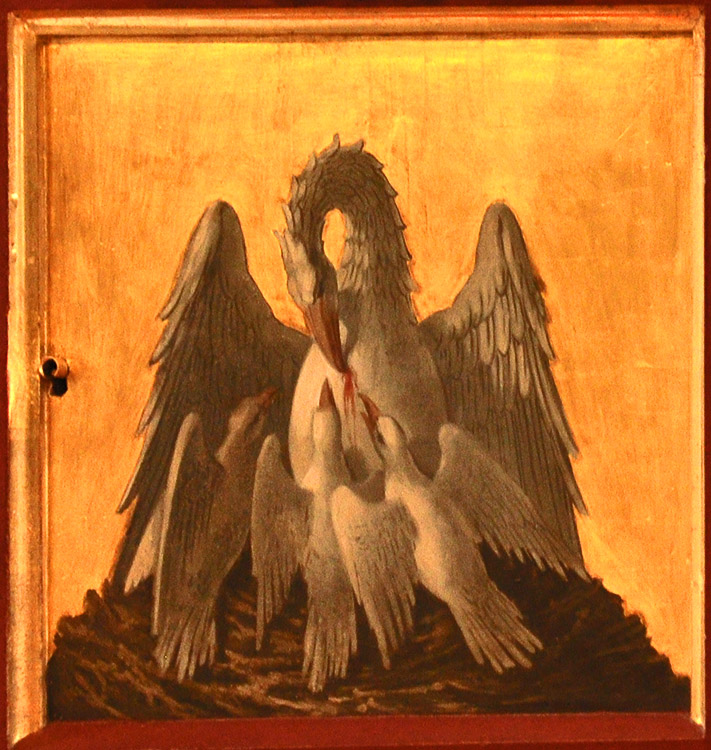Mariapfarr's Altar of the Madonna and Child

15th century?
Pfarrkirche, Mariapfarr, Austria
The central core of the altarpiece comprises a sculpture of God the Father at the very top, the dove of the Holy Spirit aloft above the statue of the Virgin Mary and the Christ Child (crowned by two angels), a crucifix, and a tabernacle with a pelican on the door.
 The pelican was believed to pierce its own breast in order to feed its young. It thus served as a symbol of Jesus' selfless gift of his own life for mankind. This gift is further emphasized by the bird in the child's hands and the crucifix in Mary's left hand, the latter a feature unusual for Madonna and Child images.
The pelican was believed to pierce its own breast in order to feed its young. It thus served as a symbol of Jesus' selfless gift of his own life for mankind. This gift is further emphasized by the bird in the child's hands and the crucifix in Mary's left hand, the latter a feature unusual for Madonna and Child images.
The mandorla-shaped burst of light rays behind the statue of the Virgin Mary refers to Revelation 12:1.
The four painted panels are explained in separate pages:
As for dating, one would think the altarpiece is from the 15th century, the heyday of enthusiasm for window-framing and for the new technique of linear perspective, both of which are used here even though they are utterly inappropriate to the subject. Also, it was in the 15th century that the Mariapfarr presbytery was renovated. However, according to Wikipedia it was not until the 16th century that tabernacles were placed at the center of the altar. If this is so, either my estimate is off or the tabernacle was slotted in at a date later than that of the altarpiece.
View this image in full resolution.
Read more about Madonna and Child images.
Photographed at the site by Richard Stracke, shared under Attribution-NonCommercial-ShareAlike license.
 The pelican was believed to pierce its own breast in order to feed its young. It thus served as a symbol of Jesus' selfless gift of his own life for mankind. This gift is further emphasized by the bird in the child's hands and the crucifix in Mary's left hand, the latter a feature unusual for Madonna and Child images.
The pelican was believed to pierce its own breast in order to feed its young. It thus served as a symbol of Jesus' selfless gift of his own life for mankind. This gift is further emphasized by the bird in the child's hands and the crucifix in Mary's left hand, the latter a feature unusual for Madonna and Child images.
